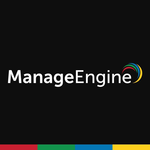What is our primary use case?
Basically, Ansible is a configuration management tool. Mainly, I've been using Ansible for making changes and for deployments, such as of web servers. I also use it for servicing instances, mostly from AWS. I use AWS Cloud, and I configure the instances that I've launched.
Recently, I've also created an Ansible role. Basically, you can contribute to Red Hat in the form of an Ansible role. Everybody can share their code with just simple commands, such as Ansible Galaxy. With a few commands, we can share each other's infrastructure.
How has it helped my organization?
It helps us to create an environment. I'm a student. As students, when we get into newer technologies, we can't share our infrastructure with each other, and it gets difficult to explain to everybody. For example, I want to tell my friend to do certain things so that his infrastructure is similar to mine. In such a case, I'll just create a playbook from Ansible, and I'll just share it with him. He will just run that playbook, and we both will have the same infrastructure.
It doesn't require us to change our existing infrastructure in any way. We just need Ansible software on the managed host. So, it just needs to have Ansible. The host with which we are going to connect should have the Python interpreter installed, and nothing else.
It saves time when it comes to service deployment, moves, or updates. We have created playbooks, which are very easy to create. They are scripts in Python. A playbook also acts as a documentary for you. You can refer to a playbook any time, and it definitely saves a lot of time. It gives very good results in a long run. You just have to invest time in creating the first playbook. After that, you just use it. While creating a playbook, you can specify keywords by using Ansible variables. For example, to launch an instance in AWS Cloud, I need to specify a name to it. If I need to launch two to three instances at once, I will create a variable for it and pass it externally through the Ansible playbook. Next time, you can change the keyword and run the playbook.
What is most valuable?
Ansible is agentless. So, we don't need to set up any agent into the computer we are interacting with. The only prerequisite is that the host with which we are going to interact must have the Python interpreter installed on it. We can connect to a host and do our configuration by using Ansible.
Its dynamic inventory capability is very useful. For example, we are provisioning instances in AWS, and I want a particular name tag. My name tag is my instance, and I've been running a lot of instances in AWS Cloud. If I want, I can filter and configure all instances running with a specific name. I can also dynamically fetch IPs. What happens in the AWS cloud is that if you shut your operating system down, and you do some reboot and stuff like that, then you'll lose the public IP. Being able to dynamically fetch IP is the main capability that I like in Ansible.
It is very easy to use. Anybody who has studied computer science or is from the mathematical field can easily use Ansible. You just have to know how to do a certain task. For example, if you want to make some changes to your firewall and maybe set up a web server, you don't have to know all the commands with respect to different operating systems such as Linux and Windows. You don't need to know commands, and you just need to have a basic idea about how you want to do it. It is very easy to use. You just have to know how to do it.
What needs improvement?
Ansible is great, but there are not many modules. You can do about 80% to 90% of things by using commands, but more modules should be added. We cannot do some of the things in Ansible. In Red Hat, we have the YUM package manager, and there are certain options that we can pass through YUM. To install the Docker Community Edition, I'll write the yum install docker-ce command, but because the Docker Community Edition is not compatible with RHEL 8, I will have to use the nobest option, such as yum install docker-ce --nobest. The nobest option installs the most stable version that can be installed on a particular system. In Ansible, the nobest option is not there. So, it needs some improvements in terms of options. There should be more options, keywords, and modules.
For how long have I used the solution?
I've been using Ansible for about one and a half years.
What do I think about the stability of the solution?
It is quite stable. It has been good so far. I didn't find any bugs.
We do our operating system-related configurations and router configurations by using Ansible. I am focusing on operating system-based configuration because I use it in the operating system, and it has been quite stable.
What do I think about the scalability of the solution?
It is scalable. You just need to know the IP address of the new operating system with which you are going to interact. You just need to enter credentials into Ansible inventory. You have to make entries to this inventory, and you are good to go. You can use the same configuration that you have been using in your previous host.
How are customer service and technical support?
I have not interacted with their technical support because I didn't come across any issues from Red Hat's side. It has been stable, and there was no need to contact them.
There is an open-source community of Red Hat and Ansible Galaxy where users contribute. I've contributed two to three times.
Which solution did I use previously and why did I switch?
I just started using Puppet and Chef. The main thing where Ansible stands out is that you don't need to make any changes to the upcoming hosts. With Puppet and Chef, you have to install an agent program that will act as a layer for interacting with the host. You need to install an agent in between, which takes time as well.
How was the initial setup?
It is a very straightforward process. There is a package available on their site. After we download their software for the respective distro, we just write the installation command, and everything runs greatly. After installing the product, most people make use of Ansible roles. Ansible Galaxy is already filled with a lot of roles. A lot of developers have already contributed to a great setup with their proper codes. As a user, I have to just install a role or just download it from the site. It was not a lengthy or complex process. It was very easy.
For the initial setup, it takes about 10 to 15 minutes in going through sites and searching for a particular version. The installation will take about 5 minutes. After that, you have to configure Ansible properly, which might take a little bit of time, but it also depends on whether you know the IP address of the host. If you know the IP address and credentials, then you just have to enter it in the Ansible configuration file, and it is done.
There is good integration between RHEL and Ansible. There are repositories configured for Ansible and you just enter the yum install ansible command, and it will do all the setup and it will also create a basic configuration file. The only remaining task would be to configure that inventory. You need to know the IP address of the host to which you are going to connect and the password. After you enter it into the inventory, it runs very quickly. There is no need to download it from any site. If you're using Ansible with Red Hat, then there is very little chance of any error while using Ansible.
Ansible's documentation is well-maintained and updated very frequently. You just need to go through the documentation. It is very easy to read. There is nothing much to worry about.
What other advice do I have?
Ansible Tower has great integration capabilities with enterprises solutions such as OpenShift and many more. I've seen many people integrating OpenShift with Tower, but I have not done it.
Before going for automation, one must first know the manual approach to it. After you've applied a manual approach, you can easily understand what type of automation you can do for your environment and infrastructure and how to do the automation.
When it is utilized with RHEL, things are very easy to understand. If someone has knowledge of RHEL, then they also have knowledge of Ansible. There is no need to study more about this. While using Ubuntu or different distros, you have to know more about Ansible, your OS-based package managers, and your internal configuration.
I'm currently preparing for the Ansible examination. I connect with their products remotely. They have configured every repository that one needs in their licensed products. Subscription will definitely be needed if you want to use it in the industry. If you just want to know about it, a subscription is not required.
I would rate Ansible an eight out of 10.
Disclosure: I am a real user, and this review is based on my own experience and opinions.

















I like the portion related to comparison with some of the other alternatives.